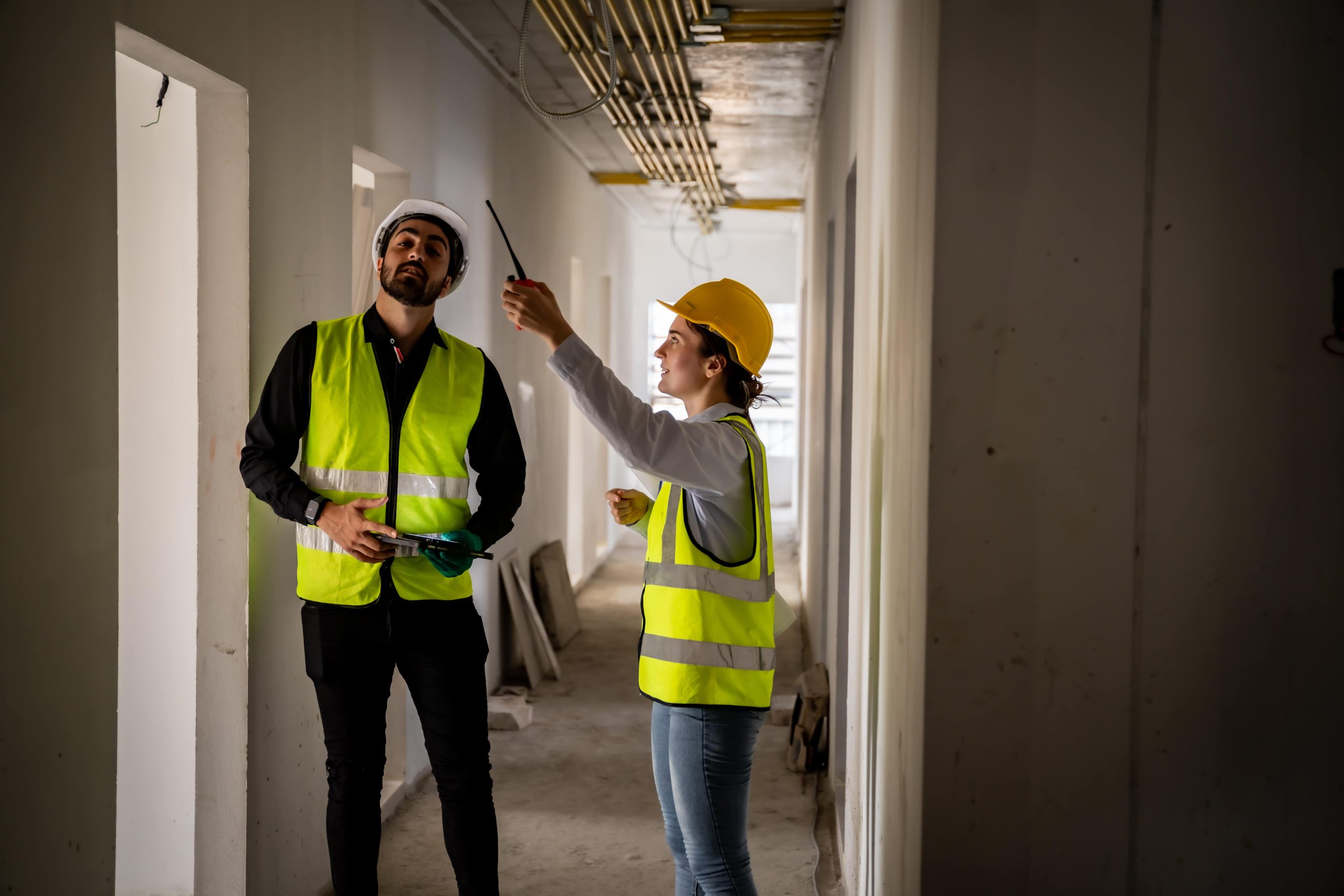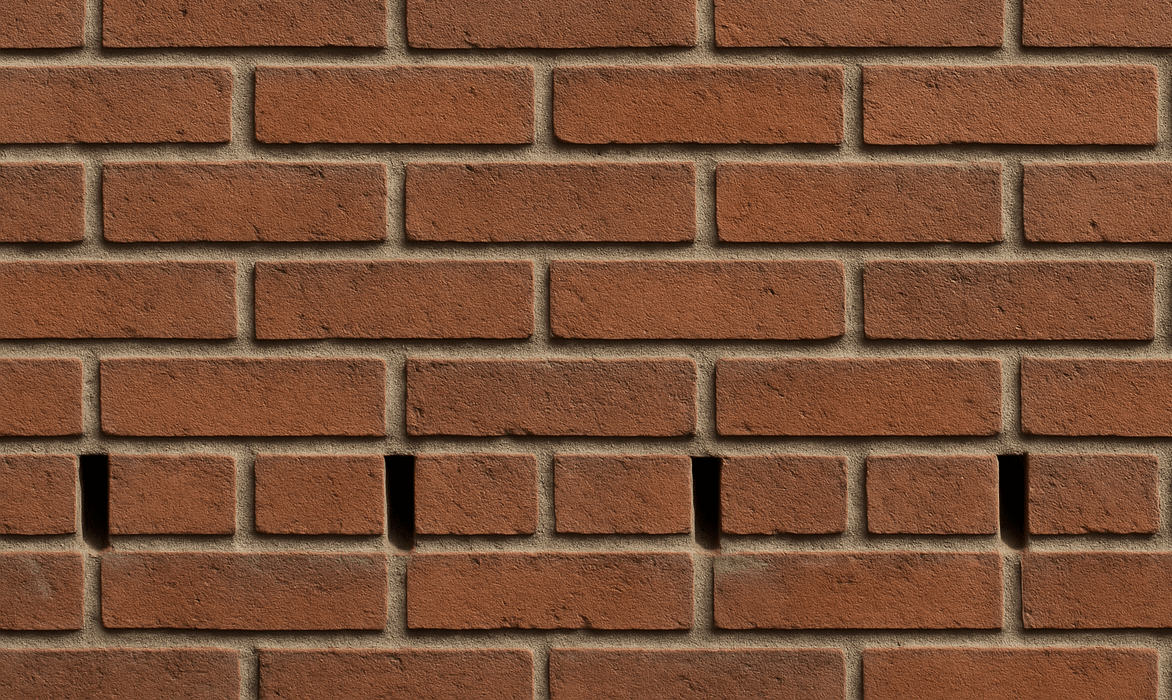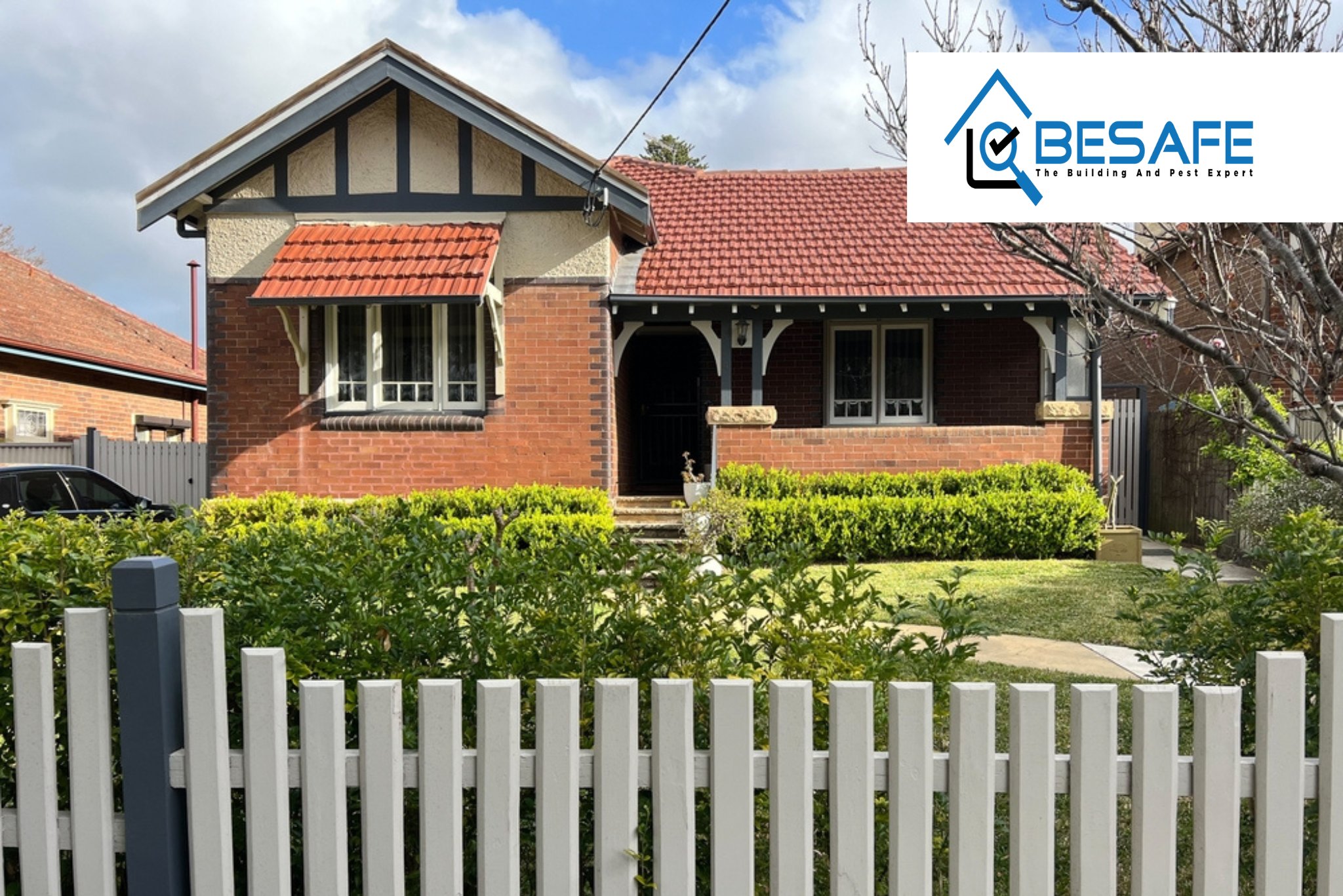
Top 7 Building Defects Found in New Sydney Properties: How to Spot Them
Sydney’s skyline is rapidly transforming, with new developments rising across the city to meet the demands of a booming population. With growth comes development, and with development comes the promise of modern, low-maintenance living. Understandably, many buyers assume that new properties are free from issues. Unfortunately, that’s not always the case.
Research by UNSW Sydney paints a different picture. Over half of Sydney’s apartments were found to have at least one type of defect, and more than one in four had three or more different defects. This reality makes the already lengthy and expensive home-buying process even more challenging.
As licensed builders and building inspectors with decades of industry experience, BeSafe have inspected countless “brand new†properties that appear flawless during initial walkthroughs but revealed serious issues beneath the surface, with structural cracks, water ingress, and roof defects being some of the most common and reported on.
Ensuring the quality and integrity of your home isn’t a luxury; it’s a non-negotiable. Knowing what to look for and when to look for it can make all the difference. In this article, we’ll guide you through the top defects found in new Sydney properties and provide expert insights that purchasers need to make informed decisions.
Understanding the Risks Behind New Sydney Builds
Sydney’s construction landscape has shifted dramatically in recent years. In a race to keep up with housing demand, developers have filled the skyline with new apartments and residential complexes. But while these new builds may look modern and move-in ready, the reality is that many are plagued by serious, and often hidden, defects.
According to the NSW Building Commission’s 2023 strata defects survey, defects were identified in 53% of buildings, a significant jump from 39% just two years prior. And, these aren’t just minor cosmetic issues. These are serious structural faults, fire safety risks, and waterproofing failures that can have major financial and safety implications for buyers.
So, what’s driving Sydney’s construction rush?
The NSW government has set ambitious housing targets, aiming to construct enough homes to address a severe housing shortage. This creates immense pressure on the construction industry to build fast and at scale. This fuels a dangerous balance between speed and quality, where the need to keep projects moving can lead to shortcuts and oversights.
Until recently, regulatory oversight has been minimal. One review of the industry revealed that many building regulators lacked the authority or the resources to enforce proper standards. And with private certifiers often employed directly by developers, there’s a built-in conflict of interest.
Compounding the issue is a widespread shortage of skilled labour. As demand for new homes rises, the construction workforce hasn’t kept pace, leaving fewer experienced professionals on the ground to maintain quality control.
Why New Doesn’t Always Mean Better
There’s a common misconception that new properties are problem-free. But recent data suggests that among buildings with detailed documentation, 51% had defects, and 28% of those had at least three different types. Even more concerning, 12% reported more than ten.
Some of the most common and serious defects include:
- Waterproofing failures and leaks (42% of documented cases)
- Structural cracking (26%)
- Fire safety system deficiencies (17%)
Why It Matters
For homebuyers, this means the stakes are higher than ever. Purchasing a new build might seem like the safest bet, but without proper due diligence, purchasers could be stepping into a long-term financial and legal predicament.
Read More: The Impact of Sydney’s Building Boom on Inspection Standards

7 Warning Signs To Look Out For
When looking at a new property, it’s easy to get caught up in the surface-level appeal; fresh paint, modern fittings and finishes. However, through our extensive expertise, we have seen that many newly built homes and apartments are plagued by recurring defects, some of which carry serious safety, structural, and financial consequences.
1. Structural Cracking and Movement
Structural defects may not always be widespread, but when they do occur, they can be significant and costly. Around 15% of buildings with serious defects are affected by structural issues such as cracking and movement.
Look out for:
- Cracks wider than 5mm
- Stair-step patterns in brickwork
- Gaps forming around windows and door frames
These often result from reactive clay soils (common across NSW), poor footing design, or substandard construction practices. Early identification is key to avoiding future instability and expensive remediation.
2. Waterproofing Failures and Water Ingress
Waterproofing is the most reported building defect in NSW, but easily missed. Improperly sealed wet areas, balconies, and roofs can allow moisture to seep into walls and floors, leading to rot, mould, and long-term structural damage.
Common red flags include:
- Discolouration on ceilings or walls
- Damp or musty smells
- Efflorescence (white, powdery residue on masonry)
3. Roofing and Guttering Defects
Roof defects are among the most commonly overlooked issues in new builds, until internal damage begins to surface. Cracked tiles, poorly installed flashing, and blocked or misaligned gutters can all result in water ingress.
Watch for:
- Water staining on eaves or interior walls
- Overflowing gutters or downpipes
- Damp spots in the ceilings near roof penetrations
Improper guttering can also create ideal conditions for termites, particularly when moisture is allowed to collect in wall cavities.
4. Plumbing Failures
Plumbing issues are another common building defect and are often due to poor workmanship or inferior materials. Leaking pipes, incorrectly installed fixtures, and poor drainage are common, especially in multi-residential developments.
Warning signs include:
- Low water pressure or slow drains
- Water stains under sinks or cabinetry
- Gurgling noises from toilets or pipes
Tree root growth into sewer lines is another frequent problem in Sydney, especially in older suburbs or poorly protected systems.
5. Electrical System Non-Compliance
Electrical defects can pose serious safety risks, including fire hazards and electric shocks. In new homes, these often stem from rushed or non-compliant installations.
Be aware of:
- Flickering lights or tripping circuit breakers
- Warm or buzzing power outlets
- Insufficient or poorly positioned power points
While older properties may have outdated wiring, many new homes still suffer from inadequate systems that fail to meet current electrical standards.
6. Combustible Cladding
Although affecting a smaller proportion of buildings, combustible cladding remains a high-risk issue, with the NSW Cladding Taskforce having identified thousands of buildings requiring remediation.
There are a number of factors that are considered when determining whether external cladding poses a risk. These include:
- Total coverage
- Vertical coverage
- Positioning around balconies, windows or doors
- The types of building
- And the way it is used
Current regulations focus on metal composite panels and insulated cladding systems in residential apartments, hotels, hospitals, and public assembly buildings.
7. Fire Safety System Failures
Fire safety systems are the second most frequently reported defect, affecting 24% of buildings with significant issues. These include failures in smoke detection, fire separation, suppression systems, and non-compliant escape routes.
Red flags include:
- Missing or damaged smoke detectors
- Blocked or inadequate fire exits
- Unclear or missing fire safety signage
Since 2023, stricter fire safety schedules have been introduced across NSW. Still, many buildings fall short of compliance, placing occupants at increased risk in an emergency.

What These Defects Could Cost You
The financial impact of building defects extends far beyond surface-level repairs. For property buyers and owners, defects can undermine market value, increase insurance costs, and trigger unexpected expenses that affect both short-term budgets and long-term investment returns.
Defect-related repair costs can vary significantly depending on the severity of the issue. Where moderate repairs can cost as much as AUD 10,000, more extensive problems can escalate even faster, running anywhere from AUD 9,000 to AUD 60,000.
One Melbourne building has combustible cladding that costs close to AUD 8 million to repair and only split between only 33 residents. The concern is that these costs are not always recoverable, causing significant financial strain on homeowners.
What about the impact on property value?
Beyond repair costs, major defects can have a substantial impact on a property’s market value. In many cases, values drop by as much as 20%, as buyers become wary of hidden issues and potential repair costs. This reduction in perceived value leads to fewer offers, lower sale prices, and a longer time on the market.
How to Spot Defects Before They Escalate
Early identification of building defects is critical in protecting both the structural integrity of a property and the financial investment behind it. What may initially appear as a minor issue can rapidly escalate into a serious problem if left unaddressed.
For buyers considering a newly built or off-the-plan property in Sydney, understanding how to identify potential defects during early inspections is essential.
Visual Indicators to Watch for During Walkthroughs
While a licensed building inspection is always recommended, prospective buyers can improve their due diligence by recognising common warning signs during initial viewings. Many of these indicators suggest underlying issues that may not be immediately apparent to the untrained eye.
Key areas to assess include:
- Structural movement: Doors and windows that stick, misalign, or fail to close properly may indicate foundation movement or wall displacement.
- Moisture intrusion: Watermarks along skirting boards, bubbling paint, sagging ceilings, or a musty odour often point to waterproofing failures or leaks.
- Cracking in walls or ceilings: Cracks running diagonally or those wider than 5mm may signal structural instability and require professional evaluation.
- Plumbing concerns: Slow drainage, leaking taps, rusted pipes, or pooling water under sinks may reflect poor plumbing installation or material failure.
- Electrical system issues: Flickering lights, warm power outlets, or outdated fuse boxes can indicate non-compliant or unsafe electrical wiring.
- External building elements: Damaged roofing, misaligned guttering, visible wall cracks, and poor site drainage can suggest larger construction or design problems.
Unusual odours, noises, or visual irregularities should also be considered, as these may be early indicators of more extensive issues requiring professional investigation.
The Role of Independent Building Inspectors
While government and council certifiers focus on regulatory compliance, their inspections often do not cover the full spectrum of workmanship and material quality. As a result, many properties that meet code requirements still present serious defects, many of which only become evident after occupation.
Independent building inspectors provide a comprehensive, unbiased assessment of a property’s condition. Unlike compliance-based inspections, these evaluations examine construction quality, adherence to industry best practices, and the presence of both existing and potential defects.
BeSafe Property Inspections employs a team of licensed builders and building inspectors with extensive experience in construction and property assessment in Sydney. Our inspections are designed to deliver detailed, accurate, and timely reports, enabling clients to make informed decisions before finalising a property purchase.
When to Schedule a Building Inspection
To ensure adequate protection during the buying process, a professional inspection should be carried out at two key stages:
- Pre-purchase inspection: Conducted after an offer has been made but prior to signing contracts. This step is vital in identifying major or minor defects before a legally binding commitment is made.
- Pre-handover inspection: For newly constructed properties, this inspection occurs before possession is taken, allowing the buyer to raise concerns with the builder while still within the defect liability period.
These inspections act as a critical safeguard against unforeseen issues, offering peace of mind and protecting long-term financial outcomes.
What Is Included in a Comprehensive Property Inspection?
At BeSafe Property Inspections, all assessments are performed by Australian Standard AS4349.1 for pre-purchase building inspections. As members of Master Builders Australia, our team upholds the highest industry standards across every inspection.
Each inspection, which typically takes between 1 and 3 hours, provides a thorough evaluation of:
- Structural elements (interior and exterior)
- Roofing systems, flashing, and guttering
- Roof cavity and insulation
- Subfloor areas and foundations
- Site drainage and external water management
- Moisture ingress and ventilation
- Compliance with general safety standards
These assessments are designed to provide a complete picture of a property’s condition, highlighting both visible and concealed issues that could affect livability, resale value, and long-term maintenance costs.

Protecting Your Investment Against Hidden Building Defects
Property defects in new Sydney builds are more common than most buyers realise. The evidence is clear, and financial risks are real. Repair costs can escalate quickly, and property values drop when major defects surface. Yet these problems are often preventable with the right approach.
Ultimately, early detection remains the most effective way to avoid these costly outcomes. A comprehensive, independent building inspection can identify existing and potential defects before contracts are finalised or keys are handed over.
Compared to the financial risks of hidden structural, waterproofing, or fire safety issues, the cost of a professional inspection is minimal, yet the value it provides is immeasurable. It empowers buyers to negotiate repairs, reconsider purchases, or plan proactively, safeguarding both financial well-being and peace of mind.
At BeSafe Property Inspections, we’ve built our reputation on thorough, honest assessments that give purchasers the full picture. Our team of licensed builders and building inspectors understands Sydney’s construction challenges and knows exactly what to look for in new properties. We examine every accessible area, document our findings with photographic evidence, and provide clear recommendations you can act on. If you’re considering a property purchase in Sydney, contact BeSafe Property Inspections today.
Featured news articles

Dilapidation Reports: What They Are and Why Property Owners Need Them
Learn what a dilapidation report is, why it’s essential before construction or demolition, and how it protects property owners from damage claims and disputes.

What are Weep Holes in Brickwork? Why Pre-Purchase Building Inspections Are Important
Learn what weep holes are, why they are vital for your home’s structural integrity, and how professional property inspections can prevent costly moisture and pest damage.

What is a Strata Report? Your Essential Guide Before Buying Property
Discover what a strata report is and why it’s crucial before buying a strata-titled property. Learn how it reveals financial, legal, and management insights to protect your investment.

How To Spot Drainage Problems: 9 Warning Signs To Look For Before Making A Purchase
Discover the 9 most common drainage issues to spot before purchasing a property. Protect your investment, learn expert tips to avoid costly repairs. Read now!

Top 7 Building Defects Found in New Sydney Properties: How to Spot Them
New doesn’t always mean defect-free. In Sydney’s booming property market, construction issues are more common than many buyers realise. From waterproofing failures to structural cracks, this guide breaks down the 7 most frequent defects found in new builds, and how to detect them before they escalate.

Pre-Purchase Building Inspection vs Pest Inspection: What You Need To Know
Buying property? Learn the key differences between pre-purchase building inspections and pest inspections, and why relying on just one could leave you exposed. Learn how these two essential inspections work together to give you a complete picture of a property’s condition, uncover hidden risks, and help you make a confident, informed investment decision.

Ultimate Personal Property Inspection Checklist Before Booking an Inspection
Discover why having a personal property inspection checklist is essential before booking a professional inspection. Taking the time to walk through a property with your own checklist allows you to identify areas of concern, prioritise your questions, and ensure nothing is overlooked. While it won’t replace the expertise of a licensed inspector, it empowers you to approach the inspection process with greater clarity and confidence.

First-Time Buyer’s Guide to Property Inspections in Sydney
Purchasing your first home in Sydney? Don’t skip the property inspection. This comprehensive guide provides key insights into what to expect during an inspection, common issues to be aware of, and how a professional assessment can protect your investment and save you money in the future.

The Impact of Sydney’s Building Boom on Inspection Standards
Sydney’s building boom is fueling rapid development, but it’s also raising concerns about the integrity of both NSW building standards and inspection quality. As construction accelerates, reports of defects are on the rise, raising concerns about the long-term integrity of new properties. With increasing pressure on the construction industry, learn how this affects inspection standards and what it means for property buyers.

How Much Does A Building Inspection Cost In Sydney?
A building inspection is an essential step in the Sydney property purchasing process, providing buyers with critical insights into potential structural issues and hidden defects. Inspection costs vary based on property size, type, and additional services required. This guide offers a comprehensive overview of building inspection pricing, key cost factors, and strategies to ensure purchasers receive the best value for their investment.

Should You Be Present at a Building & Pest Inspection? What You Need To Know
When you’re in the process of buying a property, a building and pest inspection is a crucial step in making sure you’re making a sound investment. However, one common question is whether it is necessary to attend the inspection in person. While it may seem convenient to forgo being present, attending the inspection offers valuable opportunities to gain insights directly from the expert.

What Is An Unsatisfactory Building Inspection?
An unsatisfactory building inspection can uncover hidden issues that may impact your property purchase. From structural concerns to plumbing and electrical problems, understanding what these findings mean and how to handle them is crucial.

Signs It’s Time To Walk Away From A Property
Investing in a property is exciting, but hidden building faults, pest damage, and financial red flags can all indicate it’s time to reconsider your choice. Understanding these crucial warning signs can help protect your investment and ensure you find a home that meets your needs

How To Find The Right Building Inspector
Discover essential tips for finding the right building inspector in Australia. Learn what to look for, questions to ask, and how to ensure you choose a qualified professional for your property inspection needs.

What Does a Building and Pest Inspection Cover?
A building and pest inspection is vital for any property transaction. This guide covers what these inspections include, from structural assessments to pest detection, and explains why they’re essential for safeguarding your investment. Learn about the advantages of professional inspections and find out how BeSafe Inspections can help ensure your property is in top condition.

Introducing our new strata inspector
BeSafe’s Strata Inspector Tina has joined the team to help us expand our capacity for delivering strata reports to unit and apartment buyers in Sydney.

Why Sydney homebuyers need independent property inspection reports
Property inspection reports are essential for Sydney buyers who want to ensure they get exactly what they are paying for.

Before you buy: Is your new house hiding leaks?
If you’re looking to buy a home in Sydney, a pre-purchase building inspection is vital to detect household leaks and rising damp.

Common Defects Found In Buildings
If you’re in the process of purchasing a new property, it can be daunting to consider the repairs it may need. Discover the most common building defects, their causes, and how to address them effectively to make informed decisions and protect your investment.

Building Inspections
Looking to purchase a property but wondering if you actually really need a building inspection

The Cause Of Wall Cracks
Understanding the cause requires consideration of a large number of factors

Cracks in Buildings
The sight of cracking can set off alarm bells in anyone considering purchasing a property


